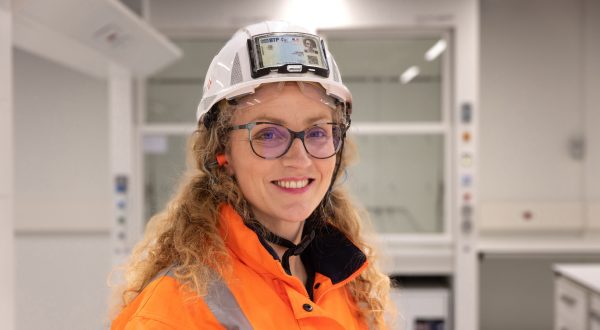From check in to baggage drop off and security screening, all stages of passenger movement through the airport are being automated to simplify the process. VINCI Airports is one of the main companies leading this transformation.
![]()
Online check in and ticket storage in smartphones are now giving the airline passenger a first glimpse of the digital transformation taking place in airports – but only a first glimpse, since the transformation that is increasingly being rolled out is set to completely overhaul the air travel experience. State-of-the-art technologies such as blockchain, robotics, and artificial intelligence are now being used to provide “smooth and seamless” travel, says VINCI Airports Technical Director Cédric Laurier.
For VINCI Airports – which is part of the VINCI Group and operates 46 airports around the world – the airport is more than a transfer point through which it must be possible to move as smoothly as possible. “It is a gathering place where people accompany their family and friends, and it must be made more people-focused, while making the most of digital technology,” says Cédric Laurier.
By the end of 2021, three-quarters of the world’s airports will have biometric identity checking systems
All stages of the passenger process, including check in, baggage drop and security are covered. VINCI Airports is currently testing an automated self bag drop system in three airports – Lisbon, Portugal; Nantes, France; and Kansai International, Japan. “So far the passenger was only able to check himself in to get a boarding pass. Now he will also be able to check in his own baggage,” says the Technical Director.
Biometrics at the border
VINCI Airports has other innovations on the drawing board that use biometrics to reduce queuing times at security screening, one of the bottlenecks in the passenger process. Optimised facial recognition will enable the passenger to go through border control without having to show his or her passport several times.
This innovation is in keeping with the efforts of the main aeronautical industry service providers to make biometric identification the new benchmark in the airport.
The passenger scans his or her passport and boarding card at a kiosk and then uses its built-in camera to take a photo. The software then compares the selfie to the passport photo to confirm the passenger’s identity. Providers say that three-quarters of the world’s airports will soon be equipped with biometric identification systems.
BIM and predictive maintenance
Digital technologies that promise to gradually improve the passenger experience also help to “better manage the facility,” says the VINCI Airports Technical Director, who emphasises the advantages of BIM.
The BIM created during design and construction of new infrastructure such as the airports in Santiago de Chile and Salvador de Bahia, Brazil provides valuable information that can be used in subsequent airport operation. For example, the 3D representation includes data on the location of a lift as well as information concerning such things as its make, year of manufacture, component replacement dates, and maintenance schedule.
The noise emitted by a moving sidewalk can be processed to anticipate a breakdown, send a maintenance team and prevent the problem rather than having to repair it. Predictive maintenance ensures better performance. It also boosts passenger comfort, by removing obstacles so the passenger has more time for himself or to interact with others.
10/07/2019
Learn more:
https://www.usinenouvelle.com/





